So much of our advice centers on moving big and bulky stuff, like dressers and bookcases. Sometimes though, the hardest part of a move is figuring out what to do with your most fragile and valuable possessions… like jewelry.
Even in the face of challenging economic times, Americans purchase an average of $647 per year on jewelry. In fact, studies show that 44% of middle-aged people own fine jewelry made of precious stones or metals.
As widespread as jewelry ownership is, improper packing and transportation of jewelry are all too common. This often causes irreparable damage to both old and new pieces alike. With that in mind, here are basic tips to keep your jewelry safe and secure during your move.
Clean First, Pack Later
Before you get into the process of cataloging and processing your jewelry, it needs a thorough cleaning!
Cleaning ahead of time will ensure that the catalog photos you take accurately reflect the condition and newness of your pieces. More importantly, debris and residue are some of the top contributors to jewelry damage, so cleaning can help prevent dust, dirt, oils, and cosmetics from causing harm once everything is packed away.
- Use a jewelry cleaning solution like Simple Shine for gold, silver, platinum, and treated gemstones
- For stainless steel, use a mixture of water and baking soda for stainless steel
- For less expensive jewelry, use mild dish soap, vinegar, or lemon juice
- Not sure what your jewelry is made of? Polish with a microfiber towel to avoid damaging it
How To Make a Detailed Catalog of Your Jewelry
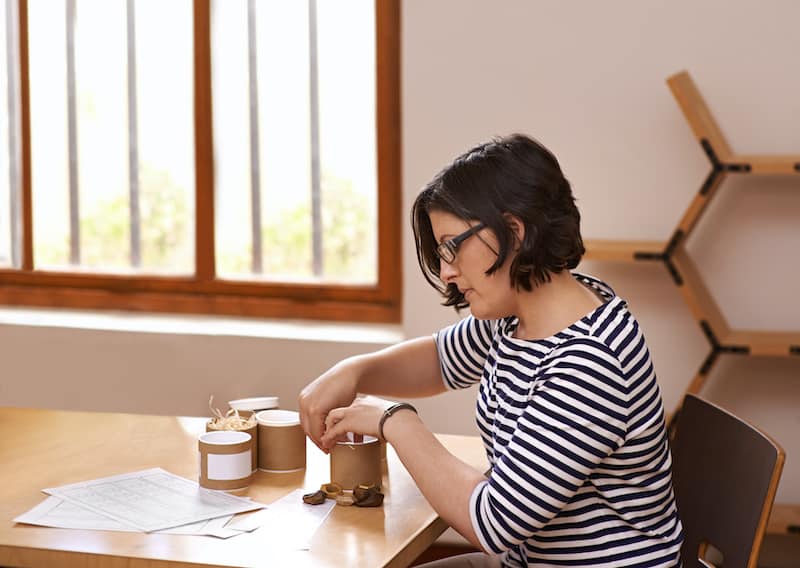
Just as you allot time to box up wall art and wrap glassware, your jewelry collection needs the same consideration in a move.
Making an inventory of your jewelry might seem like a lot of work, but trust us, you’ll be happy you took the time to do this if something is lost, damaged, or stolen along the way. Having an inventory can help you provide proof of ownership if needed for an insurance claim or recovery of stolen items (this honestly goes for any collection of expensive stuff).
Start a spreadsheet and add descriptions
We recommend starting a spreadsheet or using an inventory app for your catalog. Using Google Sheets or Microsoft Excel can ensure your sheet is accessible wherever you are. In your spreadsheet, you can include columns for data points such as these:
- ID number
- Type
- Jeweler/Designer
- Value
- Description/Details
- Original receipt (if you have it)
- Image link

An example of a jewelry spreadsheet done right
If you have a large collection, be sure to number your list so you can label your jewelry boxes with that number. Put all your carefully collected info into your new spreadsheet, and then make sure you have a backup and a printed copy for your records. Just trust us on this one — you don’t want to be fumbling around for your spreadsheet if the worst should happen.
Attach receipts (or have an appraisal done)
It’s best to attach receipts for each item of substantial value. If you’re not sure how much something is worth but you know it’s valuable, consider Googling a local jeweler for a professional appraisal. You’ll ultimately want to fill in the dollar value of each piece that you would potentially want reimbursement for if it’s damaged or stolen
Photograph or scan these documents and attach them as links to your spreadsheet. We recommend uploading them to a cloud-based storage service like your Google Drive so they can’t be lost.
 Photograph your most valuable pieces
Photograph your most valuable pieces
In this case, a picture isn’t only worth a thousand words; it could be worth (many) thousands of dollars, too.
There’s no need to go overboard with this process by using an expensive camera or a photographer. Just find yourself a low-texture black background, like a piece of paper with good lighting (try your bathroom first). You can use your phone’s camera to document your jewelry pieces in separate photos. Also, if you do have a specific box for any of your items, take pictures of them inside and outside of that box.
Once you have your photos done, upload them to your cloud account and back them up. (Some people go an extra step and print their inventory photos.)
Label everything with an ID number
Use a permanent marker to write on containers or print labels on your home printer with the ID numbers from your spreadsheet. We also recommend marking the spreadsheet with the container each item was packed in. This will help you locate your jewelry if you want to wear a piece before you unpack it all, and can also help you identify what pieces were lost if a container goes missing.
Moving far away?
Do it cheaper.
MovingPlace can save up to 40%, compared to traditional interstate moving companies. Click here to learn how.
Consider Jewelry Protection For Valuable Items
Jewelry insurance is a great idea if you have a high-value collection.
Your homeowner’s insurance will cover your jewelry collection to an extent, but it will likely max out well before the replacement or reimbursement value for extensive collections. (Note that insurance policies specific to jewelry will have higher limits and deductible requirements that are more tailored to jewelry than a generic home insurance policy.)
If you don’t have valuable items, it may not make financial sense to pay an insurance premium. You’ll likely pay between 1-3% of the jewelry’s value in annual insurance fees. However, if losing your jewelry wouldn’t cause a problem in your daily life, it’s probably not worth paying for a policy.
Remember, some insurance coverage is likely included in your homeowner’s or renter’s policy, so if those policies are in place at the time of your move, that may be enough coverage for you if you have relatively inexpensive jewelry.
Pro tip: Make sure you share this information with a potential moving service BEFORE you book them, so you know what dollar amount you could expect back from your moving company for a claim.
Packaging Jewelry Correctly
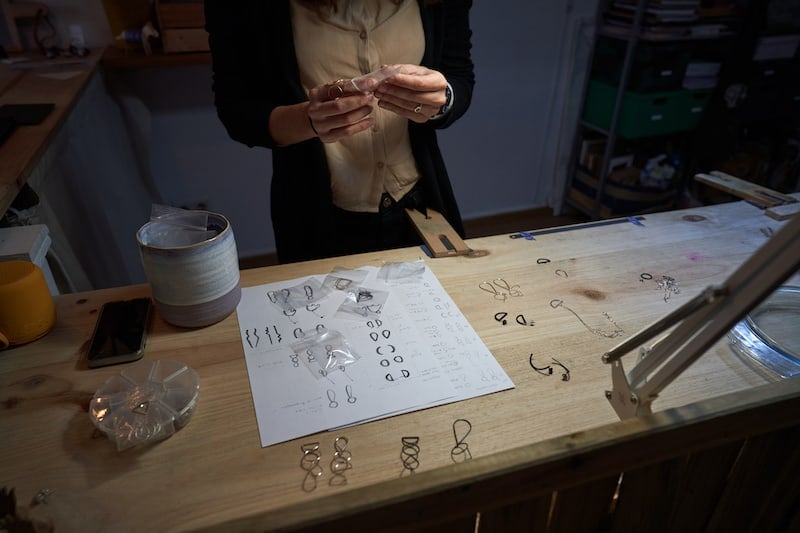
Jewelry comes in different types, shapes, and sizes, so it’s no surprise that each piece has a unique way of being packed in order to protect them from damage. Since you should have already cleaned your inventory, the other common source of damage will be from bending or tangling, broken links, and dents.
Pack your containers to reduce movement and damage
As important as the containers are (more on that below), you also need to be sure you pack them inside of them correctly.
- Wrap large or dangly earrings in individual pieces of foam or paper before they go into your case. It’s very hard to fully immobilize them, so this will add a layer of protection to your jewelry box, roll or case
- If you don’t have a case or can’t purchase one, you can repurpose large pieces of rigid foam or cardboard for earrings
- If you don’t have a custom case, hook necklaces and chain bracelets through a drinking straw to reduce movement, and then place them in individual bags or wrap them in foam or paper
Match the storage technique to each type of piece you own
No matter how great your jewelry case or wrapping techniques are, necklaces will tangle, earrings will rub together, and rings will bump into each other. With that in mind:
- Wrap large or dangly earrings in individual pieces of foam or paper to immobilize them
- Join earrings through spare cardboard or foam
- Hook necklaces and chain bracelets through drinking straws,
- Use Press’n Seal Wrap to make a custom pouch for anything that’s free-floating in your case
Pro tip: The most experienced movers can help guide you with the correct type of packaging and packing tips.
The best containers
The best container for your jewelry will be one that immobilizes each piece so it doesn’t jostle during transit and which prevents necklaces from tangling.
- Jewelry boxes are great options to keep everything in one place. Be sure you choose a design that keeps all of your items separate from each other so they don’t rub together. You’ll also want to make sure necklace storage avoids as much tangling and kinking as possible.
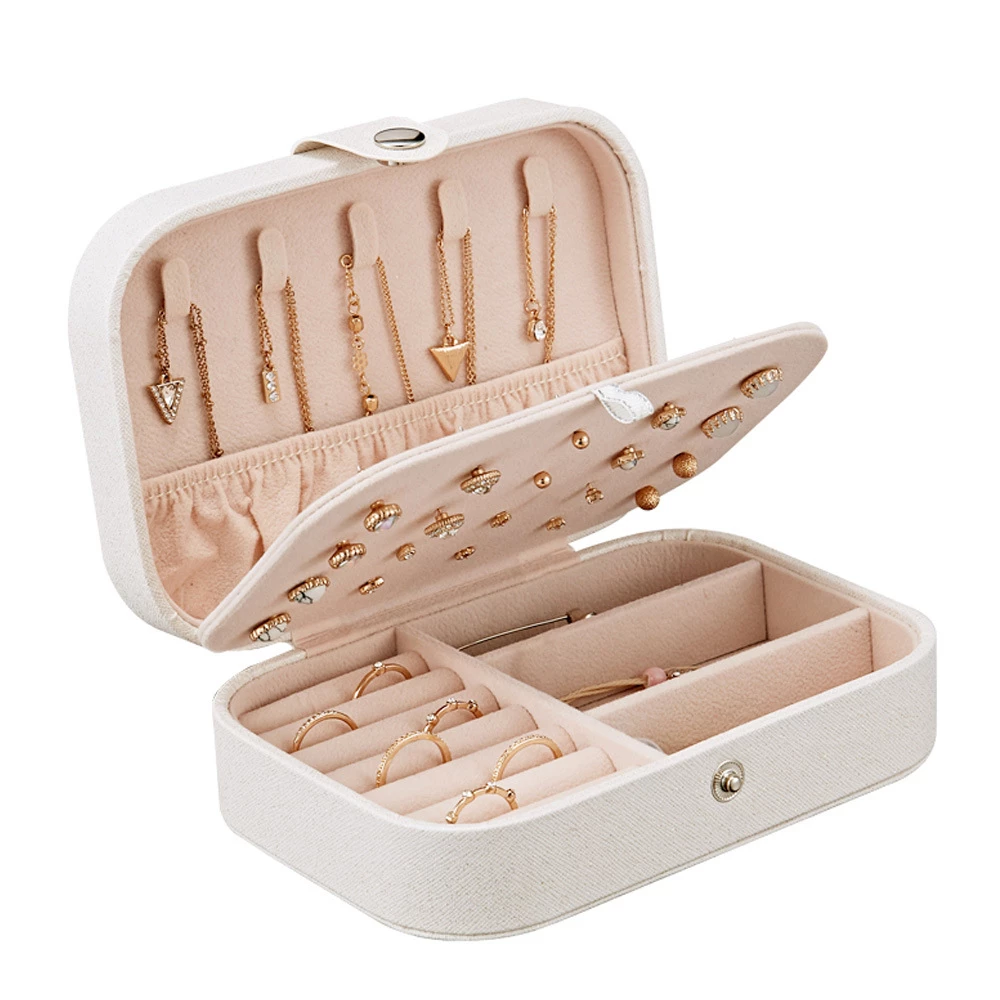
Aliexpress.com
- Individual jewelry cases can be used for all of your items. You can also use or purchase a few of these for your highest-end pieces and put the rest in a jewelry box. The advantage of individual cases is that they fully protect and pad each item in a that’s customized for its dimensions.
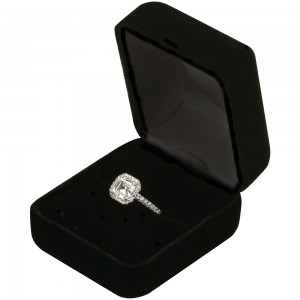
Aajewelry.com
- Individual zipper bags are great if cases aren’t an option, you can use the smallest size of zipper bags for each individual piece. Ideally, we mentioned that your jewelry pieces don’t touch each other when they’re packed — this is a great way to keep them from moving around. If you go this route, you’ll need to put each individual bag in a container that is packed tightly enough to keep the bags from jostling around.
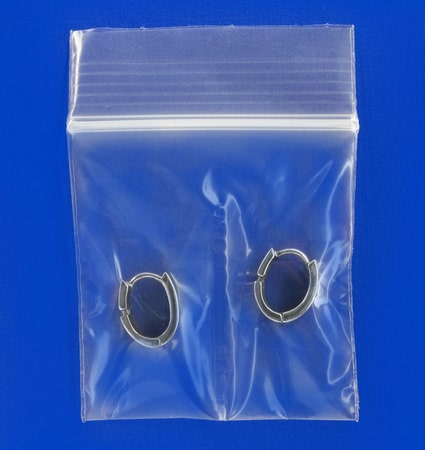
Royalbag.com
Other container options
You may have some of these containers on hand already and plan to use them. These are less ideal options because multiple pieces of jewelry are in the same slots, which can cause damage.
- Use jewelry rolls with caution, as their lack of structure can cause kinks or bends in necklace chains with stiffer links, like a box chain. Most jewelry rolls are made of velvet or satin so that they won’t scratch your valuables, and they generally have several pockets for different-sized items and a zipper pouch.
Pro tip: if you’re convinced a jewelry roll is right for you but you need to purchase it, you can DIY one by laying a hand towel on a flat surface and horizontally rolling your necklaces in it.
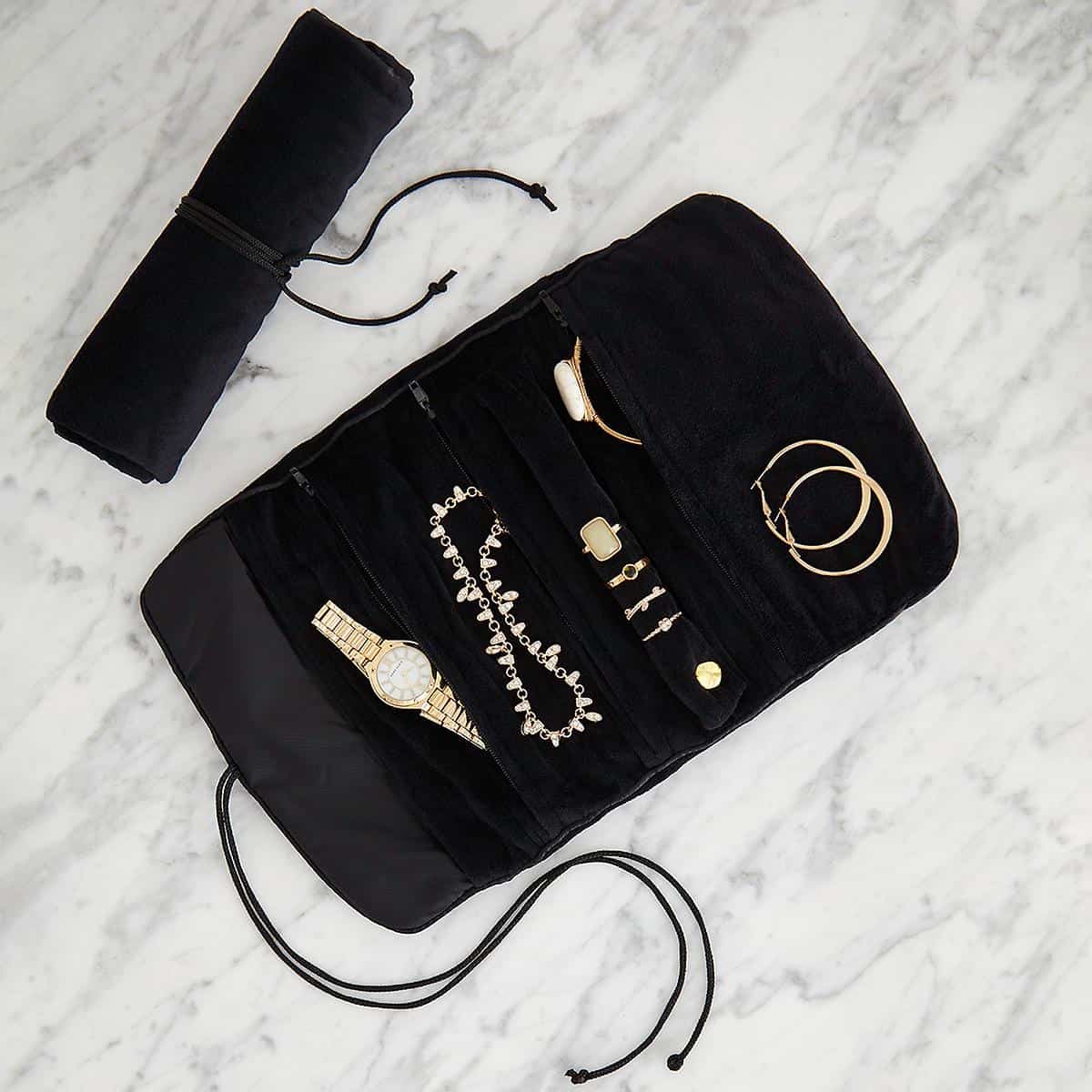
Containerstore.com
- Pillboxes can be used primarily for inexpensive stud earrings and rings. Pillboxes don’t take up much room, but the disadvantage is that they also allow pieces to rub against each other. Avoid using them for precious gems or metals.
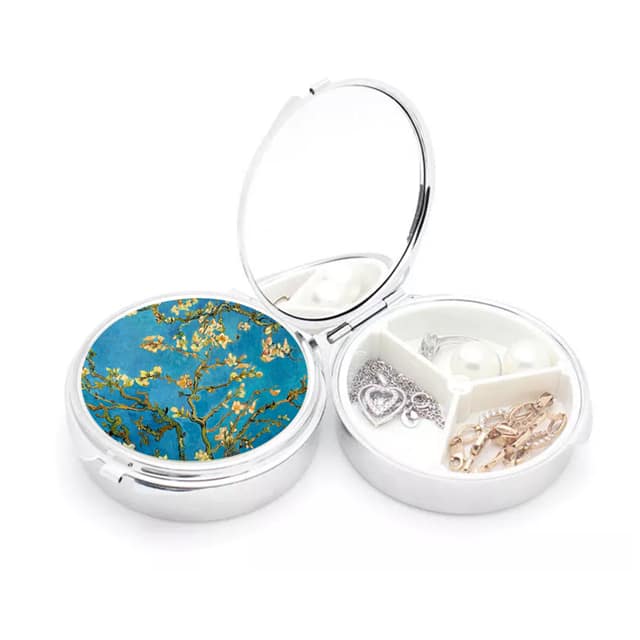
Alibaba.com
The Best Transportation Methods for Jewelry
Now that you have scheduled the day for your move, cataloged, packed, and possibly insured your items, it’s time to choose how you will transport them to their new location.
Given the fragility and value of many jewelry collections, it’s generally not a good idea to toss your packed case in with the dishes and clothes on a moving van. Instead, consider these options:
Hand-carry
Whether you’re moving to another country, city, or in-town, hand-carrying jewelry is generally the easiest and safest option. Place your jewelry case up front in the car (or in your carry-on if you’re flying) so it’s in your sight at all times.
Professional movers
If you’re in a situation where you absolutely can’t hand-carry your jewelry, it’s important to select a highly rated and reputable moving company.
Before deciding to go with this option, make sure your moving company has moved high-value items before and has a policy around how this is handled and what should happen if your valuables get lost or stolen. Additionally, we recommend that you do not label boxes as ‘Jewelry’ – this lets would-be thieves know exactly what they’re looking for.
Armored courier service
If your collection is VERY extensive and contains several high-value items, it could be worth paying the cost of an armored courier service to have your jewelry collection moved for you. These are the pros, and they’ll get your treasured pieces to your new home safe and sound.
A jeweler or safe deposit box (for short-term moves)
If you’ll only be gone for a short time, it may be easier and safer to store your jewelry in place. Some jewelers may store and protect your jewelry for a fee. Alternatively, renting a safe deposit box can give you peace of mind.
Avoid putting pricey jewelry in a storage unit!
Sometimes leaving belongings behind is unavoidable. We recommend avoiding storing your valuable jewelry in a storage unit in most cases because they often are not fully temperature-controlled and rely on low-end locks for security. If you don’t have a choice, consider insuring your storage unit to keep your valuables safe.
Jewelry is not only something that you’ll enjoy for years to come, but it’s also something that can be handed down for years if it’s properly cared for, connecting you with your family for generations.
The post How the Pros Pack Jewelry for Moving appeared first on Moving Advice from HireAHelper.

